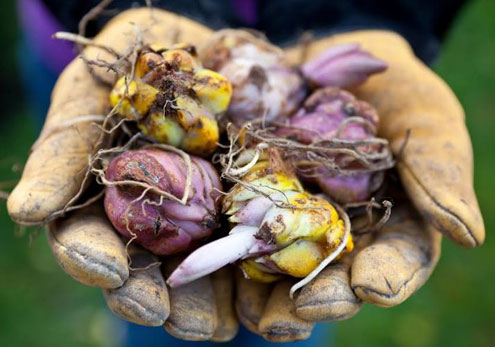As summer comes to an end, we anticipate what to plant this fall. The weather is bearable, and we know that this season is the best time to start almost any perennial, shrub, or tree. The same timing works best for spring flowering bulbs as well. Living in north Texas has some challenges when it comes to gardening and choosing the appropriate bulbs is no exception. This makes bulb selection even more important. There are numerous companies and big box stores selling bulbs. Check out companies that specifically grow for our climate. This will ensure a beautiful display this coming spring and for years to come for your perennial favorites.
Most gardeners prefer perennial bulbs, which continue to bloom for several years before needing to be divided. This is an opportunity to share with friends and neighbors. Some examples of spring flowering bulbs include daffodil, narcissus, crocus, grape hyacinth, ranunculus and paperwhites. This list is far from complete so be sure to check out your favorite nurseries and online vendors for unusual varieties. We cannot forget about tulips. Some tulips will naturalize in your landscape, but most only bloom once and you will likely need to re-purchase and plant each season. They are so beautiful, it’s often worth the trouble.
Optimal time to plant bulbs are the months October-November, ensuring good root structure necessary to sustain your plants. Planting later in the winter doesn’t give enough time to establish the strong roots needed. Once the blooms have faded, be sure to let the leaves stay in place. This will continue the photosynthesis that the bulb needs as it stores nutrients for next year.

Prepare your garden bed with lots of peat moss or other organic material like compost. Bulbs don’t thrive in hard clay soils. Mix a handful of bone meal and blood meal into the hole before planting. This encourages root development and provides slow-release nitrogen. Plant your bulbs at a depth of twice their diameter. Plant bulbs in masses for the best show by keeping them within 2-3 inches of each other. Group the same varieties together and make a real statement!
Finally, after planting, be sure to water thoroughly. Make sure the soil is completely wet, thus eliminating any air pockets formed in the soil while planting. Consider an organic mulch such as cedar or pine bark. Mulch will help to hold in the moisture between waterings. Keep soils moist even through winter as those precious roots are developing.
Bulbs do require planning and thinking ahead, but when those sweet flowers raise their heads in early spring, it will be worth the wait. Often, everything around will still be sleeping, and our spring flowering bulbs will be saying “hello spring”.
Resources:


